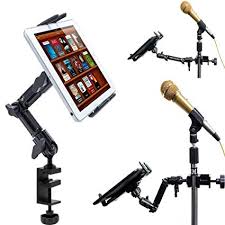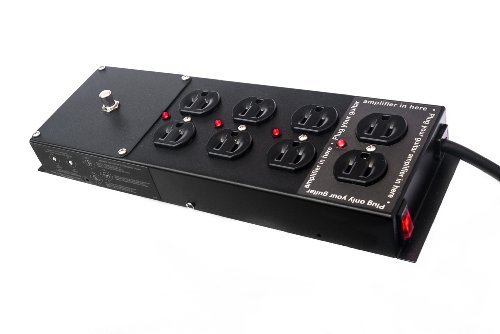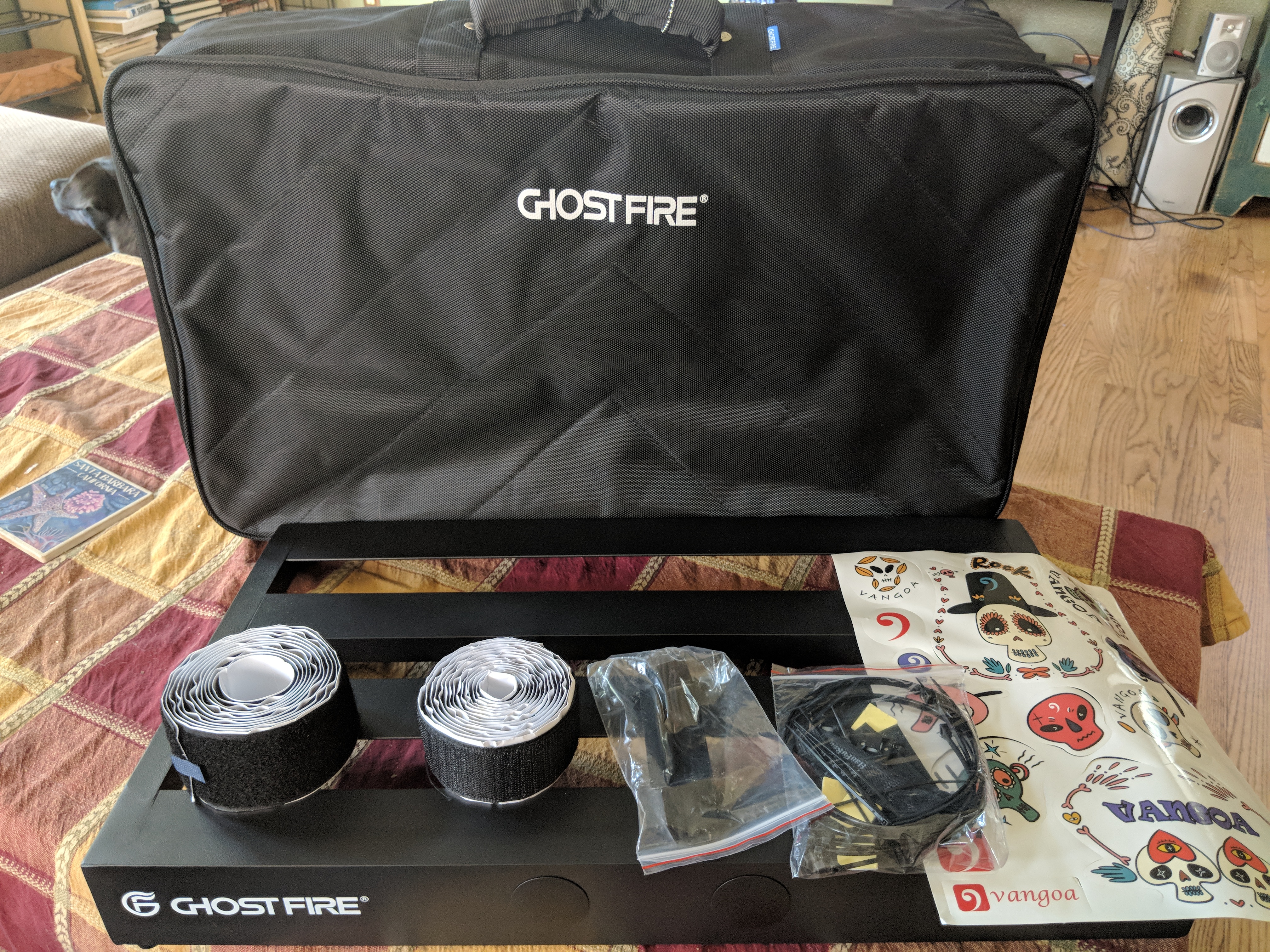
Summary: If you’re a gigging musician that needs to mount a tablet on their mic stand, at least in my mind, there’s no equal to this. With the 4-way joints, you’ll be hard-pressed to find a position you can’t get your table into. This is a very well-engineered accessory!
Pros: When they say heavy-duty, they mean it! The articulating arms are all made of metal and though the mount itself is plastic, it’s made of that high-velocity plastic that is pretty rugged as are all the plastic knobs. The unit even includes a tripod mounting plate!
Cons: None.
Price: $48.95 on Amazon.
Tone Bones: 5 Tone Bones! Tablet mounts just don’t get better than this!

Features:
- Compatible with ALL 7″ to 12″ tablets (I got it specifically for my Surface Pro 6)
- Spring-loaded lock design – The internal spring is pretty heavy-duty as well and is very high tension.
- Exchangeable slide-in hooks to accommodate all tables. The hooks themselves have ridges to prevent the tablet from slipping.
I’ve spoken about digitizing my charts and sheets in the past, so I won’t belabor that here. The benefits are incredible! But you have to have a way to mount it or use a music stand.
Years ago, when I was using my iPad for my music, I used the IK Multimedia iKlip. But when I switched all my tablet usage to my Microsoft Surface Pro recently, I needed a new mount. IK Multimedia has the “Expand” model that would work, and I was just going to get that. But when I went to Amazon to buy it, I saw the ChargerCity mount in the alternatives. That immediately intrigued me!
So I did a bit of research to see what this tablet mount was all about. A 4-way fully-articulating arm? Holy crap! I thought it was too good to be true, but the reviews on Amazon were incredibly positive. But being naturally skeptical, I checked the product link on ReviewMeta.com to see if the reviews were actually genuine. The rating it got was “WARN” because there seemed to be a lot of fake reviews. BUT that only accounted for 9% of all reviews, which meant that most reviews were genuine. So I pulled the trigger.
Fit and Finish
The first thing that struck me when I opened the package was the weight. All the arm pieces are solid metal. This thing is built like a tank! It arrives in pieces, so you have to assemble it. I took a picture of the assemly that you can see below. But the cool thing is that I realized that I don’t have to use the extension arm, which provides me with tons of flexibility in the setup!

The full arm assembly and the tablet tray are both attached via a ball joint. This allows for easy rotation and tilting. And as far as the clamp is concerned, it was designed to mount not only to a mic stand but to a table as well! How useful is that?
Here are some close-ups I took of the assembled unit:







Sorry about my messy garage… But as you can see in the picture with my Surface Pro mounted, I’ve got it set up for my next gig tomorrow. That clamp holds the tablet very well in place. I was a little concerned that it would do a good job, but as I said, that spring is heavy duty and it takes a bit of effort to place the tablet in the mount. In the picture where I’m holding clamp open, it snapped shut a couple of times and pinched my index finger. Ouch!
Overall Impression
Is a tablet mount rather pedestrian and utilitarian? Sure it is. But compared to other mounts, this beats them all hands-down! Being able to mount it to a mic stand or a table and being able to position it exactly where I want it are simply massive for me! With the ability to mount to a table or even a podium will make this really useful for doing presentations as well. I’m excited!















 One of the things that completely pisses me off when I’m gigging is when I reach my foot out to activate a pedal in the back row of my board, and I end up also activating a pedal in the front row. Aiiiyeeee!!! This happened to me recently at a church gig. I was playing a nice, sweet, clean solo, and want to texture my sound a bit by adding some reverb.
One of the things that completely pisses me off when I’m gigging is when I reach my foot out to activate a pedal in the back row of my board, and I end up also activating a pedal in the front row. Aiiiyeeee!!! This happened to me recently at a church gig. I was playing a nice, sweet, clean solo, and want to texture my sound a bit by adding some reverb.